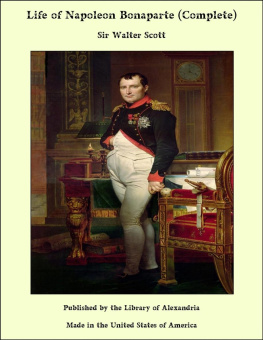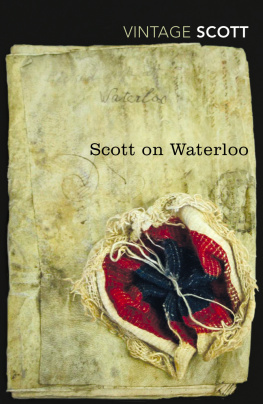Walter Scott - A Legend of Montrose
Here you can read online Walter Scott - A Legend of Montrose full text of the book (entire story) in english for free. Download pdf and epub, get meaning, cover and reviews about this ebook. genre: Adventure. Description of the work, (preface) as well as reviews are available. Best literature library LitArk.com created for fans of good reading and offers a wide selection of genres:
Romance novel
Science fiction
Adventure
Detective
Science
History
Home and family
Prose
Art
Politics
Computer
Non-fiction
Religion
Business
Children
Humor
Choose a favorite category and find really read worthwhile books. Enjoy immersion in the world of imagination, feel the emotions of the characters or learn something new for yourself, make an fascinating discovery.

- Book:A Legend of Montrose
- Author:
- Genre:
- Rating:3 / 5
- Favourites:Add to favourites
- Your mark:
- 60
- 1
- 2
- 3
- 4
- 5
A Legend of Montrose: summary, description and annotation
We offer to read an annotation, description, summary or preface (depends on what the author of the book "A Legend of Montrose" wrote himself). If you haven't found the necessary information about the book — write in the comments, we will try to find it.
A Legend of Montrose — read online for free the complete book (whole text) full work
Below is the text of the book, divided by pages. System saving the place of the last page read, allows you to conveniently read the book "A Legend of Montrose" online for free, without having to search again every time where you left off. Put a bookmark, and you can go to the page where you finished reading at any time.
Font size:
Interval:
Bookmark:
A LEGEND OF MONTROSE
by
Sir Walter Scott
I. INTRODUCTION TO A LEGEND OF MONTROSE.
The Legend of Montrose was written chiefly with a view to place before the reader the melancholy fate of John Lord Kilpont, eldest son of William Earl of Airth and Menteith, and the singular circumstances attending the birth and history of James Stewart of Ardvoirlich, by whose hand the unfortunate nobleman fell.
Our subject leads us to talk of deadly feuds, and we must begin with one still more ancient than that to which our story relates. During the reign of James IV., a great feud between the powerful families of Drummond and Murray divided Perthshire. The former, being the most numerous and powerful, cooped up eight score of the Murrays in the kirk of Monivaird, and set fire to it. The wives and the children of the ill-fated men, who had also found shelter in the church, perished by the same conflagration. One man, named David Murray, escaped by the humanity of one of the Drummonds, who received him in his arms as he leaped from amongst the flames. As King James IV. ruled with more activity than most of his predecessors, this cruel deed was severely revenged, and several of the perpetrators were beheaded at Stirling. In consequence of the prosecution against his clan, the Drummond by whose assistance David Murray had escaped, fled to Ireland, until, by means of the person whose life he had saved, he was permitted to return to Scotland, where he and his descendants were distinguished by the name of Drummond-Eirinich, or Ernoch, that is, Drummond of Ireland; and the same title was bestowed on their estate.
The Drummond-ernoch of James the Sixth's time was a king's forester in the forest of Glenartney, and chanced to be employed there in search of venison about the year 1588, or early in 1589. This forest was adjacent to the chief haunts of the MacGregors, or a particular race of them, known by the title of MacEagh, or Children of the Mist. They considered the forester's hunting in their vicinity as an aggression, or perhaps they had him at feud, for the apprehension or slaughter of some of their own name, or for some similar reason. This tribe of MacGregors were outlawed and persecuted, as the reader may see in the Introduction to ROB ROY; and every man's hand being against them, their hand was of course directed against every man. In short, they surprised and slew Drummond-ernoch, cut off his head, and carried it with them, wrapt in the corner of one of their plaids.
In the full exultation of vengeance, they stopped at the house of Ardvoirlich and demanded refreshment, which the lady, a sister of the murdered Drummond-ernoch (her husband being absent), was afraid or unwilling to refuse. She caused bread and cheese to be placed before them, and gave directions for more substantial refreshments to be prepared. While she was absent with this hospitable intention, the barbarians placed the head of her brother on the table, filling the mouth with bread and cheese, and bidding him eat, for many a merry meal he had eaten in that house.
The poor woman returning, and beholding this dreadful sight, shrieked aloud, and fled into the woods, where, as described in the romance, she roamed a raving maniac, and for some time secreted herself from all living society. Some remaining instinctive feeling brought her at length to steal a glance from a distance at the maidens while they milked the cows, which being observed, her husband, Ardvoirlich, had her conveyed back to her home, and detained her there till she gave birth to a child, of whom she had been pregnant; after which she was observed gradually to recover her mental faculties.
Meanwhile the outlaws had carried to the utmost their insults against the regal authority, which indeed, as exercised, they had little reason for respecting. They bore the same bloody trophy, which they had so savagely exhibited to the lady of Ardvoirlich, into the old church of Balquidder, nearly in the centre of their country, where the Laird of MacGregor and all his clan being convened for the purpose, laid their hands successively on the dead man's head, and swore, in heathenish and barbarous manner, to defend the author of the deed. This fierce and vindictive combination gave the author's late and lamented friend, Sir Alexander Boswell, Bart., subject for a spirited poem, entitled "Clan-Alpin's Vow," which was printed, but not, I believe, published, in 1811 [See Appendix No. I].
The fact is ascertained by a proclamation from the Privy Council, dated 4th February, 1589, directing letters of fire and sword against the MacGregors [See Appendix No. II]. This fearful commission was executed with uncommon fury. The late excellent John Buchanan of Cambusmore showed the author some correspondence between his ancestor, the Laird of Buchanan, and Lord Drummond, about sweeping certain valleys with their followers, on a fixed time and rendezvous, and "taking sweet revenge for the death of their cousin, Drummond-ernoch." In spite of all, however, that could be done, the devoted tribe of MacGregor still bred up survivors to sustain and to inflict new cruelties and injuries.
[I embrace the opportunity given me by a second mention of this tribe, to notice an error, which imputes to an individual named Ciar Mohr MacGregor, the slaughter of the students at the battle of Glenfruin. I am informed from the authority of John Gregorson, Esq., that the chieftain so named was dead nearly a century before the battle in question, and could not, therefore, have done the cruel action mentioned. The mistake does not rest with me, as I disclaimed being responsible for the tradition while I quoted it, but with vulgar fame, which is always disposed to ascribe remarkable actions to a remarkable name.See the erroneous passage, ROB ROY, Introduction; and so soft sleep the offended phantom of Dugald Ciar Mohr.
It is with mingled pleasure and shame that I record the more important error, of having announced as deceased my learned acquaintance, the Rev. Dr. Grahame, minister of Aberfoil.See ROB ROY, p.360. I cannot now recollect the precise ground of my depriving my learned and excellent friend of his existence, unless, like Mr. Kirke, his predecessor in the parish, the excellent Doctor had made a short trip to Fairyland, with whose wonders he is so well acquainted. But however I may have been misled, my regret is most sincere for having spread such a rumour; and no one can be more gratified than I that the report, however I have been induced to credit and give it currency, is a false one, and that Dr. Grahame is still the living pastor of Aberfoil, for the delight and instruction of his brother antiquaries.]
Meanwhile Young James Stewart of Ardvoirlich grew up to manhood uncommonly tall, strong, and active, with such power in the grasp of his hand in particular, as could force the blood from beneath the nails of the persons who contended with him in this feat of strength. His temper was moody, fierce, and irascible; yet he must have had some ostensible good qualities, as he was greatly beloved by Lord Kilpont, the eldest son of the Earl of Airth and Menteith.
This gallant young nobleman joined Montrose in the setting up his standard in 1644, just before the decisive battle at Tippermuir, on the 1st September in that year. At that time, Stewart of Ardvoirlich shared the confidence of the young Lord by day, and his bed by night, when, about four or five days after the battle, Ardvoirlich, either from a fit of sudden fury or deep malice long entertained against his unsuspecting friend, stabbed Lord Kilpont to the heart, and escaped from the camp of Montrose, having killed a sentinel who attempted to detain him. Bishop Guthrie gives us a reason for this villainous action, that Lord Kilpont had rejected with abhorrence a proposal of Ardvoirlich to assassinate Montrose. But it does not appear that there is any authority for this charge, which rests on mere suspicion. Ardvoirlich, the assassin, certainly did fly to the Covenanters, and was employed and promoted by them. He obtained a pardon for the slaughter of Lord Kilpont, confirmed by Parliament in 1634, and was made Major of Argyle's regiment in 1648. Such are the facts of the tale here given as a Legend of Montrose's wars. The reader will find they are considerably altered in the fictitious narrative.
Font size:
Interval:
Bookmark:
Similar books «A Legend of Montrose»
Look at similar books to A Legend of Montrose. We have selected literature similar in name and meaning in the hope of providing readers with more options to find new, interesting, not yet read works.
Discussion, reviews of the book A Legend of Montrose and just readers' own opinions. Leave your comments, write what you think about the work, its meaning or the main characters. Specify what exactly you liked and what you didn't like, and why you think so.




